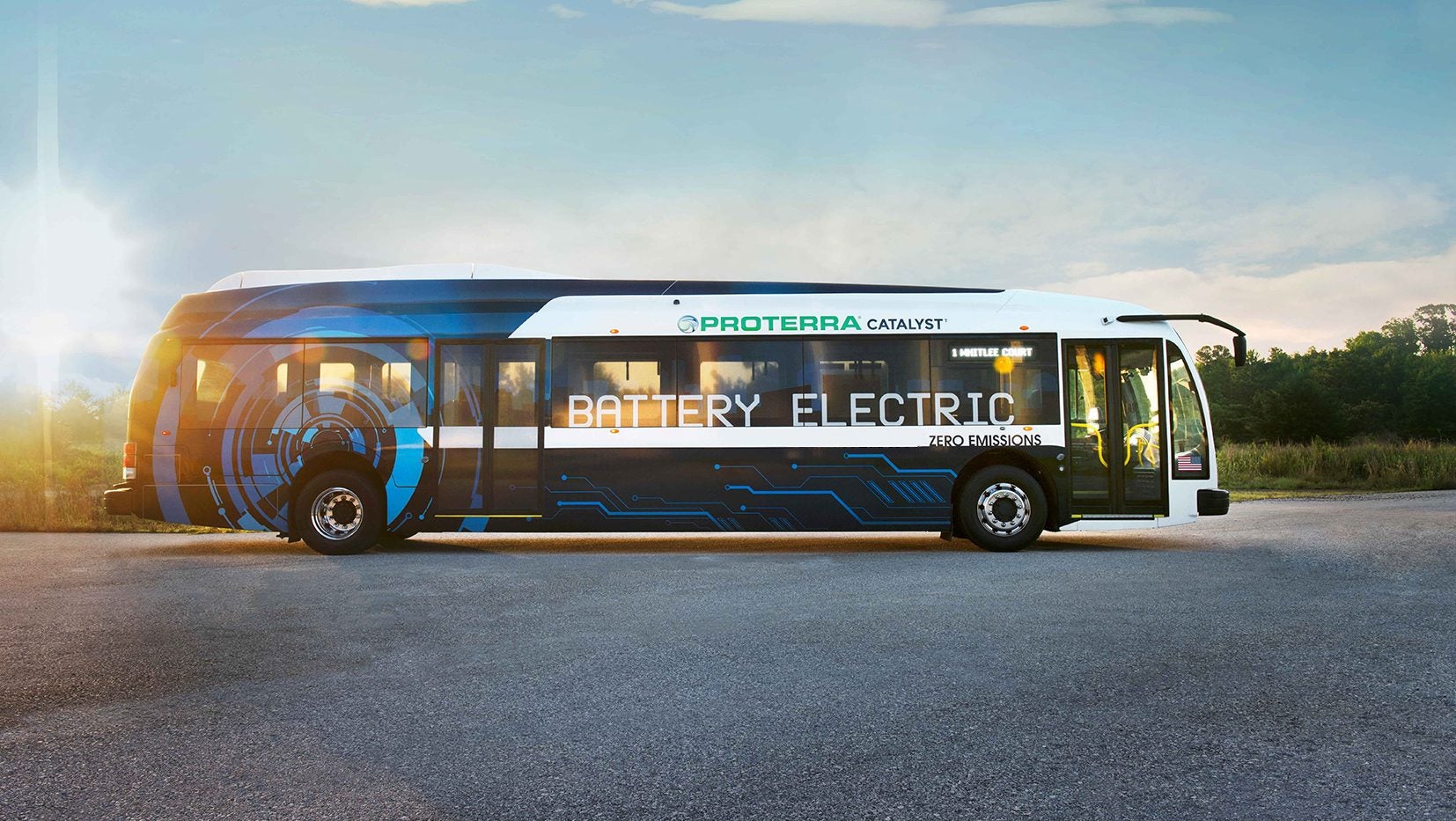An electric bus just snagged a world record by driving 1,100 miles on a single charge
The Tesla Model S can cruise for about 550 miles without recharging when pushed to the limit. Proterra just strapped two rooftop batteries on its 18-ton bus and drove the vehicle 1,101.2 miles on a single charge.


The Tesla Model S can cruise for about 550 miles without recharging when pushed to the limit. Proterra just strapped two rooftop batteries on its 18-ton bus and drove the vehicle 1,101.2 miles on a single charge.
The Sept. 4 feat at Indiana’s Navistar Proving Grounds reportedly clinched the long distance record for any electric vehicle (EV). The previous title was set in 2011 by an experimental one-seat German car that traveled 1,013.8 miles (1,631.5 km) in 36 hours. The previous bus record is 633 miles in 2015. Proterra said it did not register with Guinness due to scheduling issues, but had Navistar act as an official independent observer.
Proterra’s 40-foot “Catalyst E2 Max” electric bus is perhaps the least likely claimant to the EV range throne, but it shows one thing. ”As a company, we’re done working on range,” said Ryan Popple, the CEO of Proterra, a California-based manufacturer of electric buses. Although the bus will probably travel only 350 miles in actual service once fully loaded and contending with city traffic, the company has made so much progress on distance (Proterra’s maximum range in 2015 was 258 miles), it can now focus on price.
Lighter frames, more efficient drivetrains, and better batteries are allowing manufacturers to hone in on the most lucrative application for electric vehicles, at least in the short run: heavy-duty, high-mileage trucks, and busses. To do that, they need to bring down the up-front price for corporate and government fleet owners. In China, government subsidies and lower-quality busses have made the electric bus ubiquitous. In the US and Europe, agencies are just now preparing to change their fleets over to the technology.
The economics of EVs work because the more you drive them, the more you save over conventional vehicles. A typical passenger car in the US might burn a few hundred gallons of fuel per year, but buses, garbage trucks, and cargo trucks consume thousands of gallons of diesel and incur heavy maintenance schedules.
That adds up. Proterra says transit authorities save about $50,000 in annual fuel and maintenance costs per vehicle with EV fleets. For Proterra’s standard $750,000 bus with a 200-mile range, buyers typically recover their premium over a $500,000 conventional diesel bus in five years, and rack up even more savings after that. EV costs are dropping as well. By 2025, Popple predicts the purchase price for Proterra’s busses will be even lower than today’s diesels.
But September’s mileage record only means something if Proterra can sell its busses en masse. So far, says Sam Jaffe, founder and managing director at the energy consultancy Cairn ERA, the company has been known for one-off sales to municipalities. “It’s impressive they went 1,100 miles,” says Jaffe. “It doesn’t mean anything if the bus is too expensive. That has traditionally been their problem: they sell an extremely premium bus that only tends to be purchased when municipalities have grant money. That’s not a sustainable business model.”
Popple admits the company’s first busses were expensive, short-range, and required a multi-million dollar charging infrastructure. Yet as prices for lithium ion batteries have plummeted (73% since 2010), and infrastructure and parts moved into mass production, the company’s busses can now cost-effectively service most US mass transit routes on a single charge.
Proterra claims its facing more demand than it can handle, and has entered negotiations with at least half of North America’s transit agencies. The company’s Los Angeles and South Carolina factories are producing about three buses per week, a number it hopes to double by next year to fulfill orders from Philadelphia (25), Seattle (75), and other transit agencies. ”We’re trying to build buses as fast as we can,” said Popple.